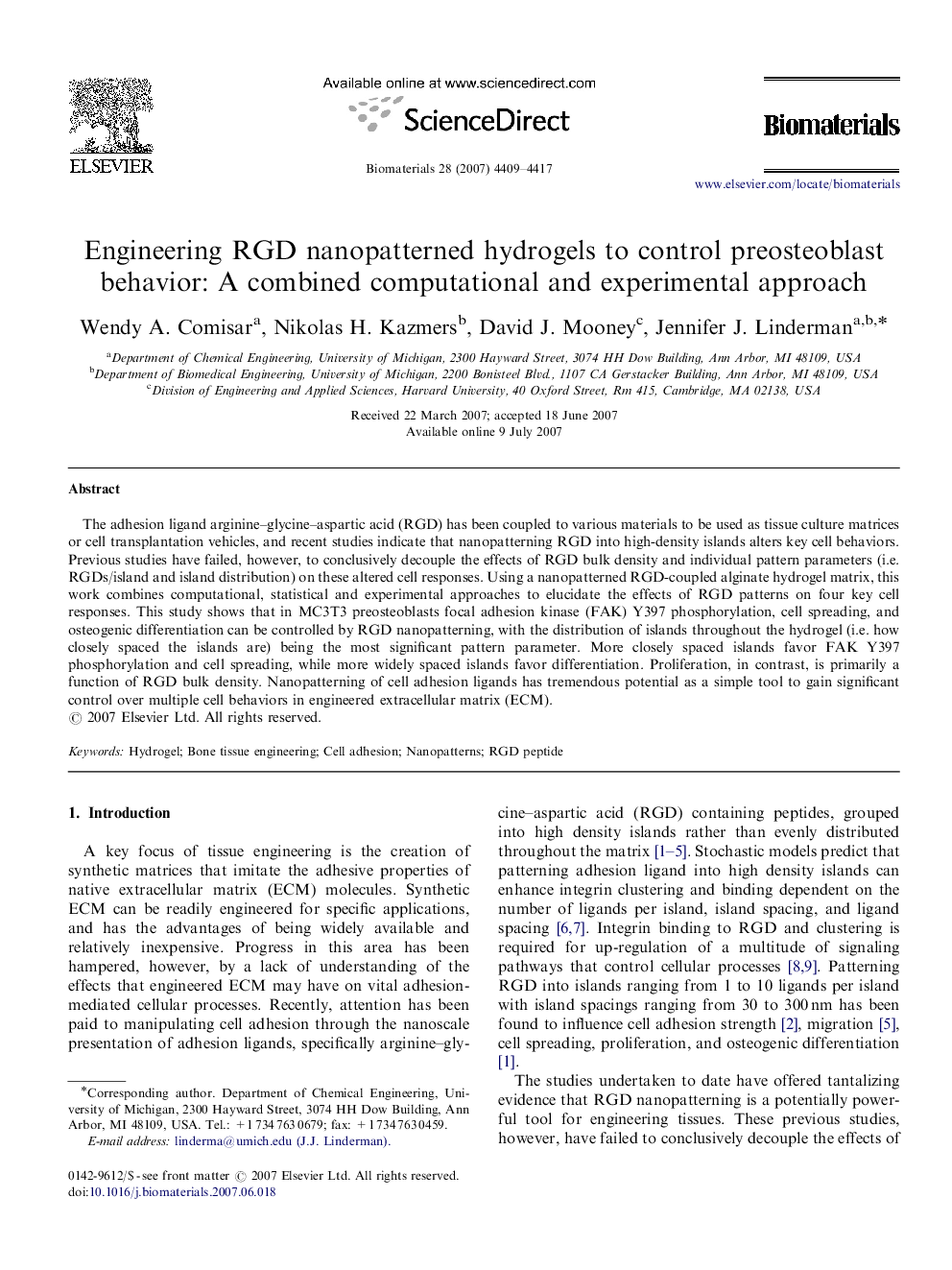| کد مقاله | کد نشریه | سال انتشار | مقاله انگلیسی | نسخه تمام متن |
|---|---|---|---|---|
| 10743 | 701 | 2007 | 9 صفحه PDF | دانلود رایگان |

The adhesion ligand arginine–glycine–aspartic acid (RGD) has been coupled to various materials to be used as tissue culture matrices or cell transplantation vehicles, and recent studies indicate that nanopatterning RGD into high-density islands alters key cell behaviors. Previous studies have failed, however, to conclusively decouple the effects of RGD bulk density and individual pattern parameters (i.e. RGDs/island and island distribution) on these altered cell responses. Using a nanopatterned RGD-coupled alginate hydrogel matrix, this work combines computational, statistical and experimental approaches to elucidate the effects of RGD patterns on four key cell responses. This study shows that in MC3T3 preosteoblasts focal adhesion kinase (FAK) Y397 phosphorylation, cell spreading, and osteogenic differentiation can be controlled by RGD nanopatterning, with the distribution of islands throughout the hydrogel (i.e. how closely spaced the islands are) being the most significant pattern parameter. More closely spaced islands favor FAK Y397 phosphorylation and cell spreading, while more widely spaced islands favor differentiation. Proliferation, in contrast, is primarily a function of RGD bulk density. Nanopatterning of cell adhesion ligands has tremendous potential as a simple tool to gain significant control over multiple cell behaviors in engineered extracellular matrix (ECM).
Journal: Biomaterials - Volume 28, Issue 30, October 2007, Pages 4409–4417